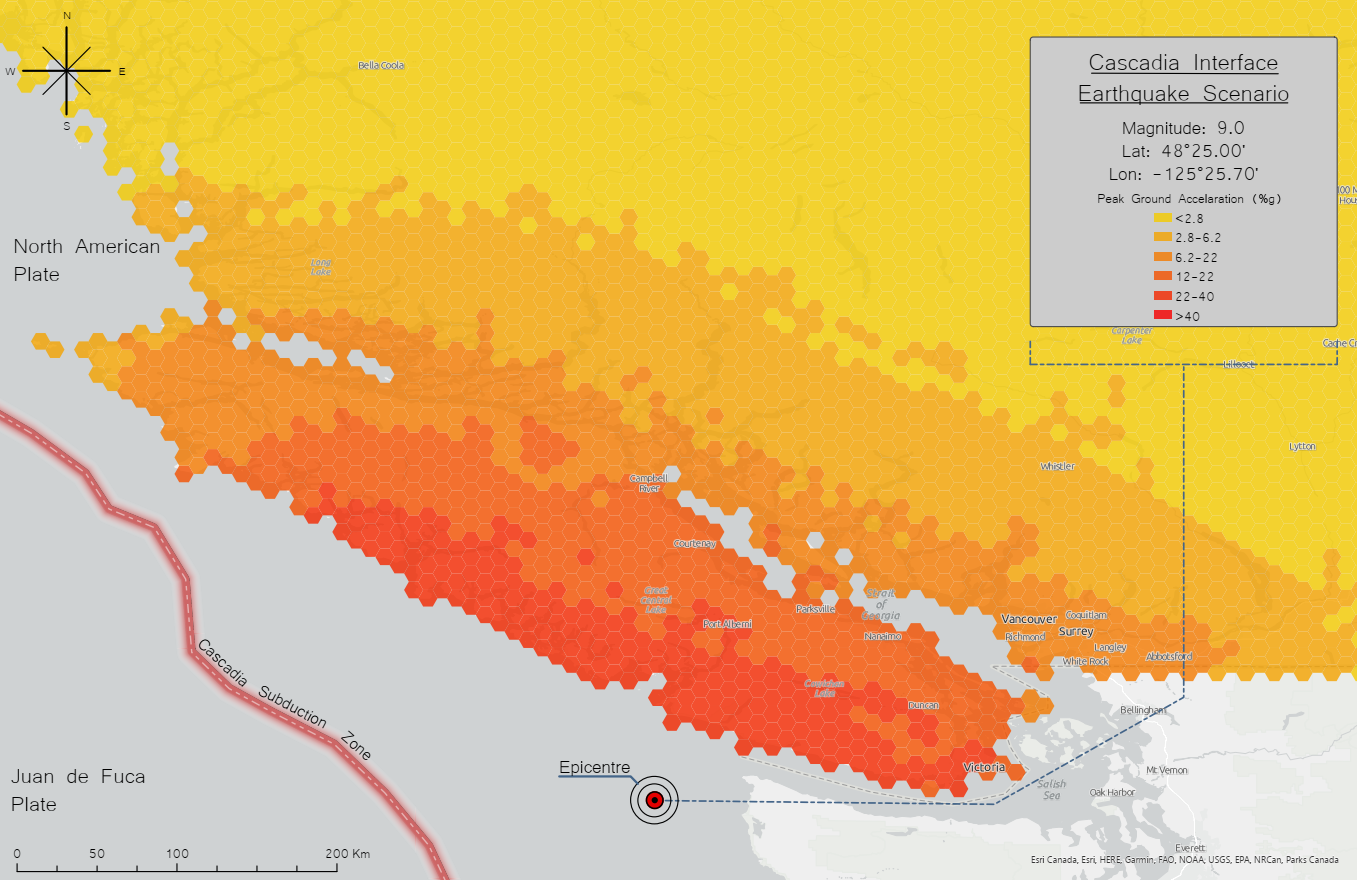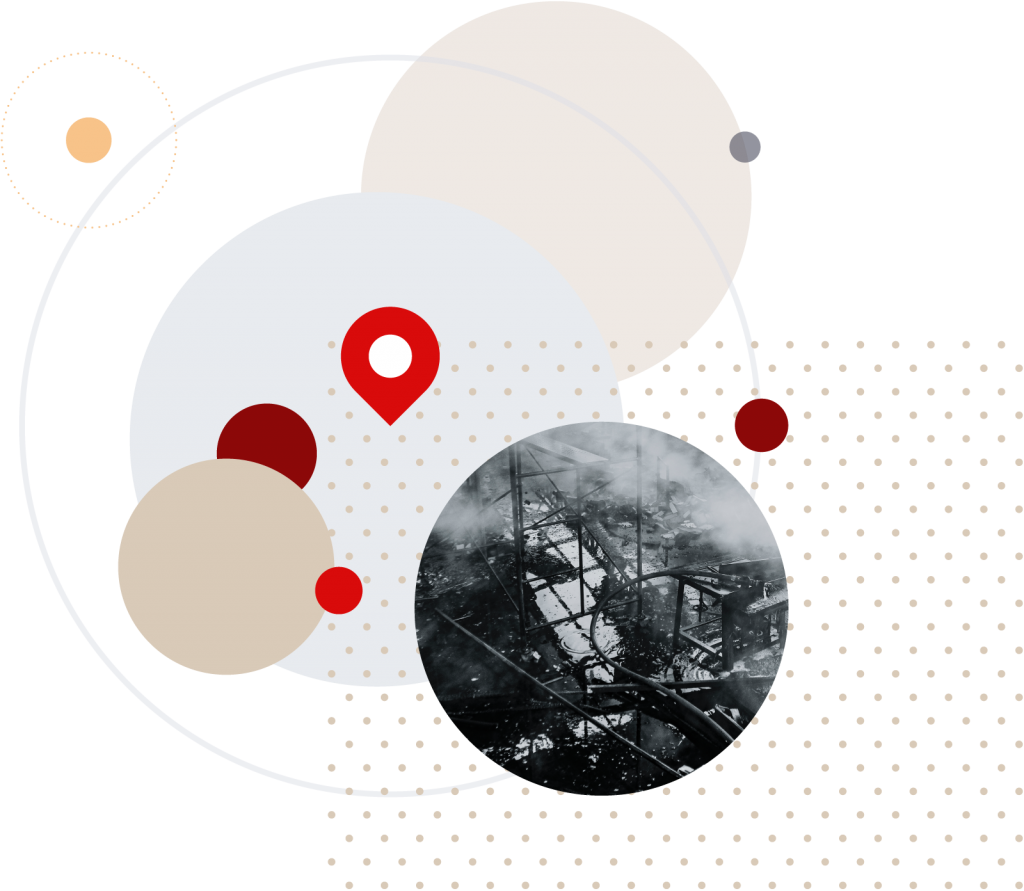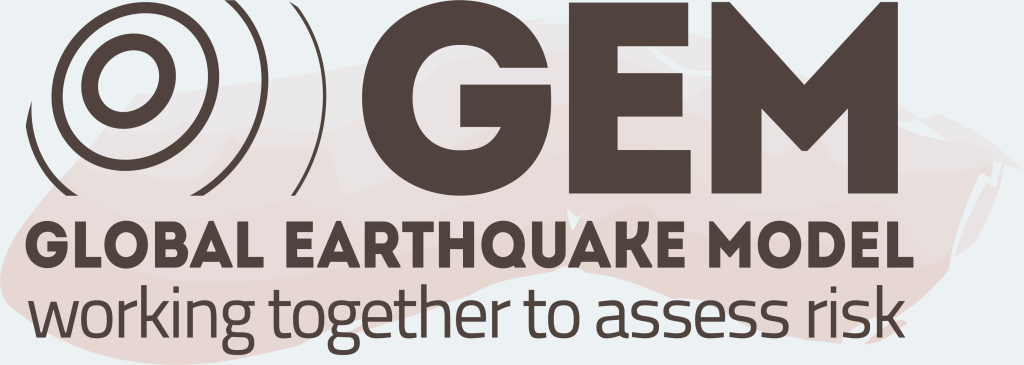As we cannot yet predict an earthquake event, scenarios are developed to represent potential damage and losses from possible earthquakes. Scenarios are a tool to understand the impact of an earthquake on a community and provide information for planning and preparation.
An earthquake scenario has a specific magnitude, location, and source fault. Scenarios are developed for known faults, historical earthquakes, or regions where we know earthquakes can happen. The scenarios in RiskProfiler have been identified by NRCan analysts based on our best understanding of earthquake science, but there are many other earthquakes that could occur and these are not necessarily the largest or most damaging possible events. The scenario catalogue is a living database that will be updated as new information and planning needs are identified. You can find more information about the earthquake scenario catalogue here.

How does RiskProfiler assess impacts of an earthquake scenario?
The impacts of an earthquake scenario are modelled by predicting the potential earthquake ground shaking for the scenario, the associated damage to buildings, and consequences as a result of building damage such as human casualties or financial losses. In general, places with more ground shaking, denser development, and fragile buildings (e.g. those made of brick as opposed to reinforced concrete) are more impacted than regions without. A detailed description of how NRCan estimates the impacts associated from earthquake scenarios can be found here. The uncertainties and intended uses of this information can be found here.
What earthquake scenario information is available on RiskProfiler and how does it help?
RiskProfiler provides the number of injuries and fatalities, direct economic cost, and number of buildings at each damage level within the earthquake impact area. RiskProfiler also provides information about the secondary consequence of how much debris may be generated from damaged buildings. For each area, you can explore how these estimates change by factors such as occupancy type, construction type, or seismic-design level. For example, it is generally true that there are more negative impacts from older pre-code buildings — buildings which were constructed prior to the acceptance of a stringent building code in Canada.
Earthquake information is available at the scale of ‘settled areas’, which show areas of building development at the scale of roughly a neighbourhood. See more information in the FAQ.
Information given for earthquake scenarios on RiskProfiler can help you answer questions like:
- What is the extent and severity of earthquake shaking?
- What are the total impacts in terms of deaths, building damages, and dollars?
- How many buildings would be uninhabitable after an event?
- What is the distribution of impacts across the affected area?
- Where are the largest impacts?
- What building types are associated with the largest impacts?
- What building occupancy types have the highest injury rates?
- How does the financial loss from this event compare to previous disasters in Canada?
RiskProfiler also provides the same outputs assuming the entire building stock is seismically retrofitted. This can help answer questions such as: what is the total potential reduction in impacts if every applicable building in the current stock was retrofitted? When the results with the retrofit toggle are broken down by building type, then you can answer questions like: what building types should be retrofitted to achieve the largest reduction in impacts?



